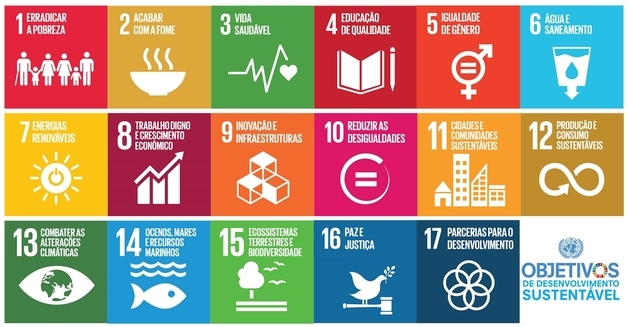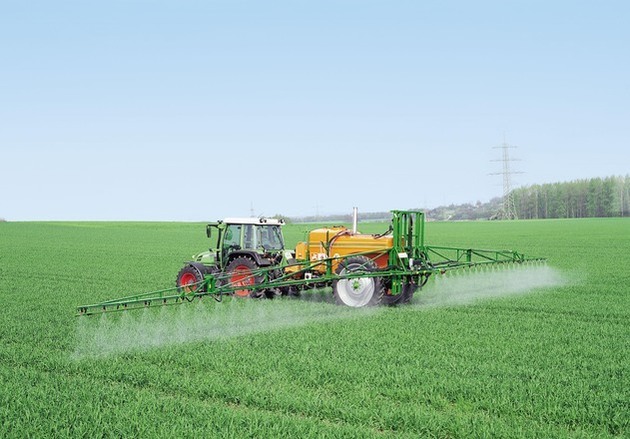Pollution is the introduction of substances or energy accidentally or intentionally into the environment, with negative consequences for living beings.
Pollution became more intense after the Industrial Revolution, which culminated in increased industrialization and urbanization.
Currently, it is considered a serious environmental problem.
In Brazil, pollution is classified as a crime, through Law No. 6.938/81 of CONAMA (National Environmental Council), which deals with the National Environmental Policy.
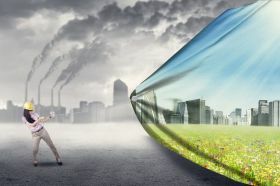
Causes
THE environment pollution is any activity capable of causing damage to the environment. It is the result of excess release of pollutants, materials or energy.
Examples:
- The carbon generated by various vehicles on a daily basis, which in contact with oxygen, produces carbon dioxide
- The use of disposable material, which promotes too much waste production in our homes and inhibits recycling
- The constant advertising on the streets or the amount of wires hanging from poles
- The daily exposure of noise - whether it's the noise of cars, the loud television or many people talking at the same time, home appliances working or doorbells ringing
Types of pollution
The agents that cause pollution are called pollutants.
According to their pollutants, there are the following types of pollution:
Water pollution
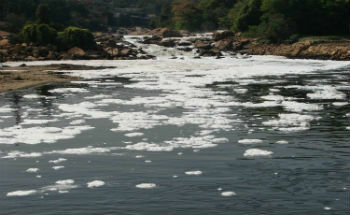
THE water pollution it is the contamination of water resources, through the release of physical, chemical and biological compounds that are harmful to living beings.
It destroys food sources, kills aquatic animals and contaminates drinking water.
Among the causes of water pollution are:
- Discharge of sewage into aquatic environments
- Dumping garbage directly into the sea, rivers or lakes
- Oil leakage resulting from maritime accidents
- Pollution of groundwater with pesticides that are carried away by rain
Read too:
- The Importance of Water
- polluted rivers
Air or Atmospheric Pollution

THE air pollution or atmospheric pollution is the result of the release of large amounts of gases or liquid or solid particles into the atmosphere.
The World Health Organization (WHO) indicates that most urban populations in the world suffer an average exposure to air pollutants that is much higher than what is considered acceptable.
It is considered reasonable, 20 micrograms of pollutants per cubic meter. In São Paulo, for example, this average is 38 micrograms per cubic meter.
A peculiarity of air pollution is that it can threaten the environment on a global scale. This is due to the circulation of gases in the atmosphere that extends far beyond the sources of pollution.
Among the causes of air pollution are:
- Excessive release of nitric acid, carbon dioxide and carbon monoxide, sulfur dioxide and nitrogen dioxide, among others. As a result of the activity of industries, vehicles and waste incineration
- volcanoes
- Logging
- burns
The environmental problems caused by air pollution are the greenhouse effect and the acid rain.
Among the diseases caused by air pollution are cancer, respiratory diseases and allergies, eye diseases.
Thermal Pollution

THE thermal pollution it is the release of heated water into aquatic environments. This situation is harmful for species that are intolerable to temperature changes.
It is a lesser known type of pollution. It results from the change in the temperature of the air and water used mainly by hydroelectric, thermoelectric and nuclear power plants.
The warming of water also causes a reduction in the concentration of oxygen gas available to aquatic organisms.
Ground pollution
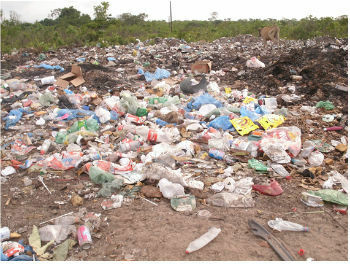
THE ground pollution corresponds to any change in its nature caused by contact with chemicals, solid and liquid waste.
This situation makes the soil unproductive and causes the death of living beings that depend on it.
The causes of soil pollution are:
- Release of pollutants in the soil such as: solvents, detergents, fluorescent lamps, electronic components, paints, gasoline, diesel, automotive oils and lead
- Disposal of household garbage, residues from industrial activities and sewage directly into the ground
Also read about the Importance of Soil.
Visual pollution

THE visual pollution it is characteristic of urban areas and consists of an excess of signs, poles, billboards, banners, posters and advertisement vehicles.
In addition, it includes urban degradation resulting from graffiti, excess electricity lines and accumulation of waste.
This type of pollution causes some visual discomfort, stress and changes the city's landscape. It can even cause traffic accidents by distracting drivers or hiding signs.
Among the causes of visual pollution are the culture of encouraging consumerism and the excess of advertising campaigns in urban centers.
Noise pollution

THE noise pollution it is the excess of noise that affects the population's physical and mental health.
It is caused by excessive noise from industries, means of transport, works, sound equipment, among other activities.
For some environmentalists, it is considered the most harmful form of pollution to human health. This is because it causes hearing problems, headache, insomnia, restlessness and difficulty concentrating.
Radioactive Pollution

THE radioactive pollution or nuclear designates the pollution generated by radiation.
Radiation is a chemical phenomenon that can have a natural or man-made source.
Radioactive pollution arises from nuclear or atomic energy produced by nuclear power plants. The type of waste generated is called radioactive or nuclear waste.
It is considered the most dangerous type of pollution in the world, due to the effects it can cause.
Among the main consequences for the human being are:
- chronic deformities
- Respiratory and circulation problems
- Poisoning
- Various types of cancer
- mental disorders
- Infections
- hemorrhages
- Leukemia
For the environment it can contaminate a large area and affect existing living beings.
Read too: Nuclear energy
Consequences
The consequences of environment polluted are causes of great concern, both for the conservation of biodiversity and for the well-being of living beings.
Pollution can lead to pathological problems, environmental destruction and climate change.
Examples:
- Respiratory and skin diseases and problems, allergies, eye diseases, hepatitis, ringworm, diarrhea, otitis, deafness
- Malformation of fetus
- Stress
- Depletion of the ozone layer
- Death of animals and plants
- A layer of smoke covering the cities
Solutions
For every type of pollution, there is a possible solution.
It is necessary to think about each one of them in order to design a resolution plan, but the starting point is the awareness of the problem and the commitment of the whole society. Each sector can take actions to prevent pollution episodes.
Examples:
- Avoid waste and consequent accumulation of waste
- Opt for bio degradable material
- Recycling
- Use ear protectors in some professions
- Caring for cars
- Promote environmental education
- Using public transport, cycling or walking
- Dispose of junk mail in appropriate places
- sewage treatment
- Development of policies aimed at tackling environmental problems
Read about: Light Pollution

